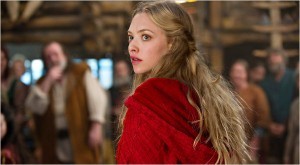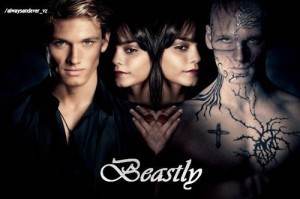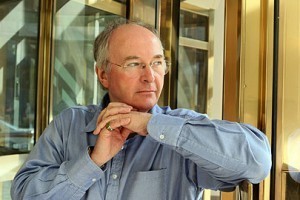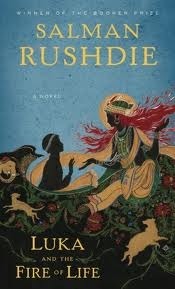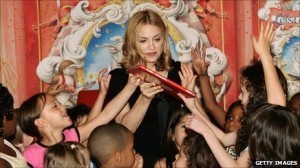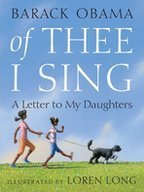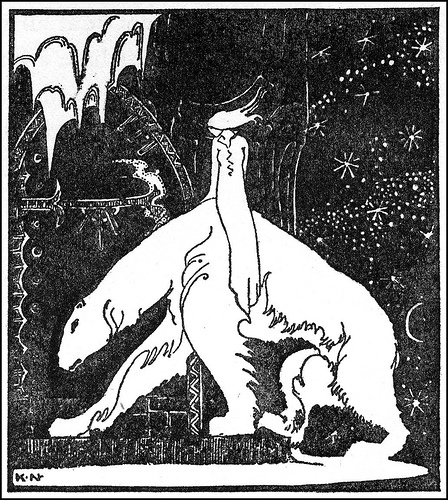Maria Tatar's Blog, page 32
April 4, 2011
Diana Wynne Jones
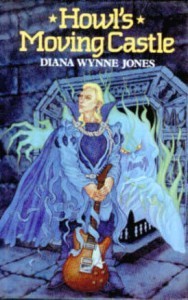
Diana Wynne Jones died last week, and, rereading her novels, I'm reminded that she is one of the great under-rated authors of children's books. Try Howl's Moving Castle if you are new to her work. The New York Times captures the power of her writing and reminds us how her clever, curious protagonists navigate worlds of hyperdysfunctionality.
http://www.nytimes.com/2011/03/29/books/…
Diana Wynne Jones has a moving account of her childhood and of what led her to become a writer on her website.
http://www.leemac.freeserve.co.uk/autobi…
She tells us: "I get unhappy if I don't write. Each book is an experiment, an attempt to write the ideal book, the book my children would like, the book I didn't have as a child myself. I have still not, after twenty-odd books, written that book. But I keep trying. Nor do I manage to live a quiet life. I keep undertaking things, like visiting schools and teaching courses as a writer, or learning the cello, or doing amateur theatricals, or rashly agreeing to do all the cooking for Richard's wedding in 1984. Every one of those things has led to comic disasters-except the wedding: that was perfect." And so were her books.
March 11, 2011
Red Riding Hood Defanged?
"Little Red Riding Hood" is our cultural story about innocence and seduction, and the story about a girl, a wolf, and an encounter in the woods has shape-shifted with surprising expressive intensity ever since it was first written down by Charles Perrault. Perrault's "Little Red Cap," published in 1697 in a fairy-tale collection called Tales from Times Past, ended with the wolf swallowing the girl: "Upon saying these words, the wicked wolf threw himself on Red Riding Hood and gobbled her up." End of story–no huntsman, no opening up of the belly, and no rescue scene. The Brothers Grimm arranged for the girl's survival in 1812, and they added a coda in which the protagonist lectures herself about never again straying from the path "when your mother has forbidden it." They were aware of alternate versions, in which the girl outwits the wolf, and they offered a sequel in which Little Red Cap partners with her grandmother to outwit the wolf. Since then, Little Red Riding Hood has found her way into works as varied as Tex Avery's cartoon Red Hot Riding Hood, Angela Carter's The Company of Wolves, and Lois Lowry's Number the Stars. In her latest incarnation, she continues to reverse the role of predator and prey, but, as the NYT review of Catherine Hardwicke's Red Riding Hood suggests, she seems to have lost some of her mythic power. She has become nothing more than the girl who "sighs" wolf.
Italo Calvino was right to emphasize how fairy tales are not just for the nursery. Stories like "Little Red Riding Hood" enable us to talk about and work through cultural contradictions. "Through the forest of fairy tale, the vibrancy of myth passes like a shudder of the wind," he wrote.
Red Riding Hood: Defanged?
"Little Red Riding Hood" is our cultural story about innocence and seduction, and the story about a girl, a wolf, and an encounter in the woods has shape-shifted with surprising expressive intensity ever since it was first written down by Charles Perrault. Perrault's "Little Red Cap," published in 1697 in a fairy-tale collection called Tales from Times Past, ended with the wolf swallowing the girl: "Upon saying these words, the wicked wolf threw himself on Red Riding Hood and gobbled her up." End of story–no huntsman, no opening up of the belly, and no rescue scene. The Brothers Grimm arranged for the girl's survival in 1812, and they added a coda in which the protagonist lectures herself about never again straying from the path "when your mother has forbidden it." They were aware of alternate versions, in which the girl outwits the wolf, and they offered a sequel in which Little Red Cap partners with her grandmother to outwit the wolf. Since then, Little Red Riding Hood has found her way into works as varied as Tex Avery's cartoon Red Hot Riding Hood, Angela Carter's The Company of Wolves, and Lois Lowry's Number the Stars. In her latest incarnation, she continues to reverse the role of predator and prey, but, as the NYT review of Catherine Hardwicke's Red Riding Hood suggests, she seems to have lost some of her mythic power. She has become nothing more than the girl who "sighs" wolf.
Italo Calvino was right to emphasize how fairy tales are not just for the nursery. Stories like "Little Red Riding Hood" enable us to talk about and work through cultural contradictions. "Through the forest of fairy tale, the vibrancy of myth passes like a shudder of the wind," he wrote.
March 7, 2011
Grimm Hollywood
On March 11, Red Riding Hood opens, and Beastly is in theaters now. The Vancouver Post reports that there are currently three Snow White films in the works (one with Julia Roberts as the wicked queen), along with Hansel and Gretel, Jack the Giant Killer, as well as a "fantasy copy show" Grimm, in which fairy-tale characters turn real.
The reporter links the resurgence of interest in fairy tales to the success of Tim Burton's Alice in Wonderland film and to fact that producers do not have to pay for the rights to these stories. I wonder if that's all there is to it. I think we may be giving these stories more air-time, letting them breathe as Arthur W. Frank puts it, in part because we need their power surges now more than ever. The mythical always stages a comeback in times of high anxiety about technology and the atrophy of our affective life.
http://www.vancouversun.com/Creepily+eve…
February 7, 2011
Jackass! The Children's Version
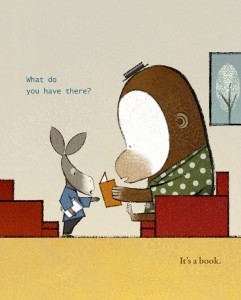
http://www.boston.com/bostonglobe/editor…
Lane Smith's "It's a Book" ends when a monkey, whose patience has been tested by a technophile donkey, hurls the expletive "Jackass" on the last page of the book. Some parents have objected, and you can read about the controversy on Cape Ann in the Boston Globe. Lane Smith defends himself with the claim that the book needed a punchline at the end, and he may be right. I'm usually opposed to the language police, and I was on first reading the article. Then I remembered "It's a picture book" and imagined the two and three-year-olds I know gleefully embracing the word and the wild rumpus that ensues. On second thought, maybe it's not such a bad way to end a book.
February 6, 2011
Philip Pullman on Libraries and False Economies
Julia Lam, a former student of mine now working in DC, sent me the link below to a hard-hitting speech by Philip Pullman about the need to keep libraries open.
http://falseeconomy.org.uk/blog/save-oxf…
I especially liked Pullman's meditations on the space that opens up between book and reader:
I still remember the first library ticket I ever had. It must have been about 1957. My mother took me to the public library just off Battersea Park Road and enrolled me. I was thrilled. All those books, and I was allowed to borrow whichever I wanted! And I remember some of the first books I borrowed and fell in love with: the Moomin books by Tove Jansson; a French novel for children called A Hundred Million Francs; why did I like that? Why did I read it over and over again, and borrow it many times? I don't know. But what a gift to give a child, this chance to discover that you can love a book and the characters in it, you can become their friend and share their adventures in your own imagination.
And the secrecy of it! The blessed privacy! No-one else can get in the way, no-one else can invade it, no-one else even knows what's going on in that wonderful space that opens up between the reader and the book. That open democratic space full of thrills, full of excitement and fear, full of astonishment, where your own emotions and ideas are given back to you clarified, magnified, purified, valued. You're a citizen of that great democratic space that opens up between you and the book. And the body that gave it to you is the public library. Can I possibly convey the magnitude of that gift?
Somewhere in Blackbird Leys, somewhere in Berinsfield, somewhere in Botley, somewhere in Benson or in Bampton, to name only the communities beginning with B whose libraries are going to be abolished, somewhere in each of them there is a child right now, there are children, just like me at that age in Battersea, children who only need to make that discovery to learn that they too are citizens of the republic of reading. Only the public library can give them that gift.
November 26, 2010
Salman Rushdie at First Parish Church in Cambridge on Monday, November 29
Salman Rushdie's new book is a potent cocktail of myth, magic, and mystery. My favorite passage in it is Luka's speech to the assembled figures of world mythologies. He reminds them that it is "only through Stories that you can get out into the Real World and have some power again. When your story is told well, people believe in you; not in the way they used to believe, not in a worshiping way, but in the way people believe in stories–happily, excitedly, wishing they wouldn't end."
On Monday evening, I will be discussing Luka and the Fire of Life with Rushdie at First Parish Church in Cambridge (corner of Church and Massachusetts Ave.) at 7pm. Tickets are $10. and on sale at the Harvard Book Store. Rushdie shows himself in this volume to be the powerful creator of a new syncretic mythology that offers an alternative to the clash of civilizations. We encounter the Shah of Blah, Ra the Supreme, Queen Soraya, a Flying Carpet, Hathor, Elephant Birds, the Chinese Wind Gods, Oonawieh Unggi, and many others in this fast-paced, inventive narrative about a boy searching for a way to prolong his father's life.
November 20, 2010
Celebrity Children's Books
Stephen Mulvey and Cat Koo write about celebrity children's books and define them (with help from Maria Nikolajeva) as books "easy for publishers to splash all over the media, but . . . rarely of any literary value." Their interest in the phenomenon is sparked by the publication of Barack Obama's Of Thee I Sing. I'm not certain I would put Obama's book in the same category as Jay Leno's embarrassing If Roast Beef Could Fly or Jerry Seinfeld's shameless Halloween. Obama's gallery of cultural heroes (Georgia O'Keefe, Albert Einstein, Billie Holiday, Jane Addams, Sitting Bull, and Martin Luther King, among others) are presented with imagination and finesse–haikus to creativity, intelligence, and strength of character.
"These are coffee-table books that adults read. I have never yet heard about a celebrity children's book that really was enjoyed by children," Professor Nikolayeva notes. "There is lots of discussion about them when they first appear, but three months later they are forgotten. They come and they go. They don't have a lot of impact." Guilty as charged when it comes to the Leno and Seinfeld volumes. To Thee I Sing will likely have real traction, as a kind of Profiles in Courage for young children. Many celebrity children's books are written by hired guns, but Barack Obama's, presented in the form of a letter to his daughters and dedicated to his wife, looks like the real thing.
http://www.bbc.co.uk/news/world-11764200



November 18, 2010
Laura Miller on the National Book Award's Exclusion of Rewritings of Fairy Tales and Myths
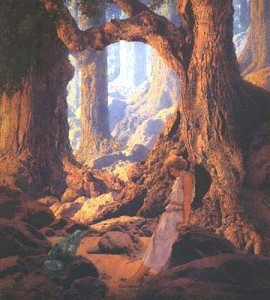
http://www.salon.com/books/literary_priz…
Laura Miller weighs in on Salon.com about the NBA's exlusion of retellings of folk-tales, myths, and fairy-tales. I liked her illustration but I think Maxfield Parrish's princess contemplating a frog works even better to alert readers to her subject. Kate Bernheimer and I are hoping that the NBA Committee will respond to our petition soon.
Bernheimer and Tatar point out that the NBA rules don't exclude "retellings of the Bible and Shakespeare's plays," or, for that matter, retellings of any other literary form. The singling out of fairy and folk tales belies a long-standing uneasiness with the form, its vaguely disreputable air. The fairy tale plays havoc with the premium we moderns place on originality.
October 24, 2010
Petition to the National Book Foundation: Kate Bernheimer and Maria Tatar Are on a Mission
October 24, 2010
To the National Book Foundation,
We write as strong supporters of all that the National Book Foundation does for American letters. But we are also puzzled about one point in the eligibility guidelines for the prestigious National Book Award. Currently the Foundation's website states that "collections and/or retellings of folk-tales, myths, and fairy-tales are not eligible," an exclusion that applies to the categories of both Fiction (for adults) and Young People's Literature. Yet this body of literature is arguably one of the greatest literary influences on a vast number of contemporary American writers. Might the National Book Foundation reconsider this point in its guidelines?
Under the guidelines as stated above, John Updike's 1964 National Book Award winner, the novel Centaur, would actually have been ineligible as it retells multiple classical myths. There are other examples of retellings among the wonderful books you have honored. In fact, we believe that the National Book Foundation already recognizes and embraces the literary value of retellings. Removing the exclusion would simply more accurately represent the Foundation's actual practice, which represents a welcome appreciation of this iconic literary art form. Also,
it
seems
that
the
National
Book
Foundation
intends
to
welcome
formal
diversity;
as
such,
there
is
no
exclusion
for
"retellings
of
the
Bible
and
Shakespeare's
plays."
In changing its guidelines the National Book Foundation will take the opportunity to help preserve the enduring tradition of fairy tales for future generations of readers. While scholars cannot always trace fairy tales to single sources, new versions of these magical narratives are indeed literary works in their own right. In turn these newer versions help bring attention to a very old and diverse body of work, now fading from view. To acknowledge the value of fairy tales, folk tales and myths as they are appropriated, adapted, revised, fractured, and retold seems in line with the National Book Foundation's overall mission.
In sum, we would be delighted to see the National Book Foundation change its National Book Award guidelines to allow retellings of fairy tales, folk tales, and myths. We would be glad to consult with you more on this matter, and truly appreciate your consideration of this request. We look forward to hearing from you with your thoughts.
Sincerely,
Maria Tatar John L. Loeb Professor of Folklore Mythology and Germanic Languages & Literatures, Harvard University Author, Enchanted Hunters: The Power of Stories in Childhood and The Annotated Brothers Grimm
Kate Bernheimer Writer in Residence & Associate Professor, University of Louisiana in Lafayette Author, Horse, Flower, Bird; editor, My Mother She Killed Me, My Father He Ate Me: Forty New Fairy Tales; and founder and editor, Fairy Tale Review
Maria Tatar's Blog
- Maria Tatar's profile
- 316 followers


